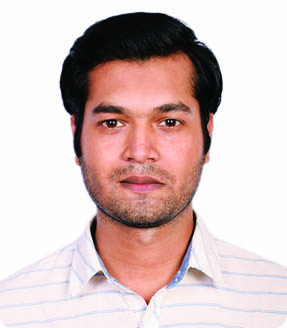Attendance in schools, colleges falling

The overall attendance in schools and colleges across the country has been slowly but gradually dropping, although huge enthusiasm was noticed among students when these educational institutions reopened on September 12.
According to sources concerned with secondary and higher secondary education, many students are showing less interest in studies after a prolonged gap while some are not attending lessons regularly.
Experts explained that such behavior of absenteeism from classrooms is nothing unusual. It is a matter of adapting to the changes.
“In the early days after schools reopened on September 12, my classes had about 65 to 70 percent attendance. However, in the last few days, we have observed a drop in attendance which is a real concern. The absentee rate has been noticed to reach as low as 55 percent,” Aysha Israt, an Assistant Teacher of Sena Nibas Govt Primary School (Mirpur) told Bangladesh Post.
However, she believes the schools are seeing a sudden fall in attendance as the government has decided not to conduct examinations like Primary Ending Certificate (PEC) and Junior School Certificate (JSC) this year.
“This year’s PEC examinees were regularly attending classes after September 12. But, when the government announced not to conduct PEC, the less they started attending schools. Rather, most of them have chosen to study at home,” added Aysha Israt mentioning the recent ending of ‘School Feeding Programme’ has worked as a moderator of the less attendance.
Meanwhile, some other teachers say the government’s decision not to force any students to attend classes physically amid the Coronavirus pandemic has made students stay home and be indifferent to attend schools.
A teacher of Dhaka Standard School, who did not want to be named, told Bangladesh Post, “Students are more engaged in assignments and do not want to come to school. The Directorate General of Secondary and Higher Education (DSHE) directed school authorities and teachers that no one can force any guardian to send their children to school.”
According to DSHE sources, absence in secondary schools has been on the rise over the last few weeks. Monitored data says, the attendance was around 67 percent when schools reopened on September 12, after 18 months of closure.
DSHE Assistant Director (Monitoring and Evaluation) Mohsena Begum told Bangladesh Post, “The attendance rate is not the same every week in every school. We have heard some students have not come back from their village home and joined schools. In addition, those students who are studying at home and attend online class cannot be considered absent.”
Some guardians say, they will send their children to schools when they feel completely safe adding they don’t find it useful to send kids to schools when their education is ongoing through online platforms.
Habiba Sultana, mother of a student at Bangabandhu Sheikh Mujib Academy told Bangladesh Post, “I don’t feel the necessity to send my children to schools. They are engaged in studies at home. I’ll think about it when examination approaches.”
Experts and educationists have identified some of the reasons behind the growing absence. According to them, many families are sending their children to work and many are reluctant to send their children to school due to the pandemic. In addition, many students think that it would be better to prepare for the exams at home instead of just two classes every day.
Headmaster of Govt Laboratory High School Mohammad Abu Sayed Bhauiyan told Bangladesh Post, “There were a few cases of Covid-19 infection, reported in the country and the guardians got worried. But the government will soon vaccinate all students along with adult-like us.”




